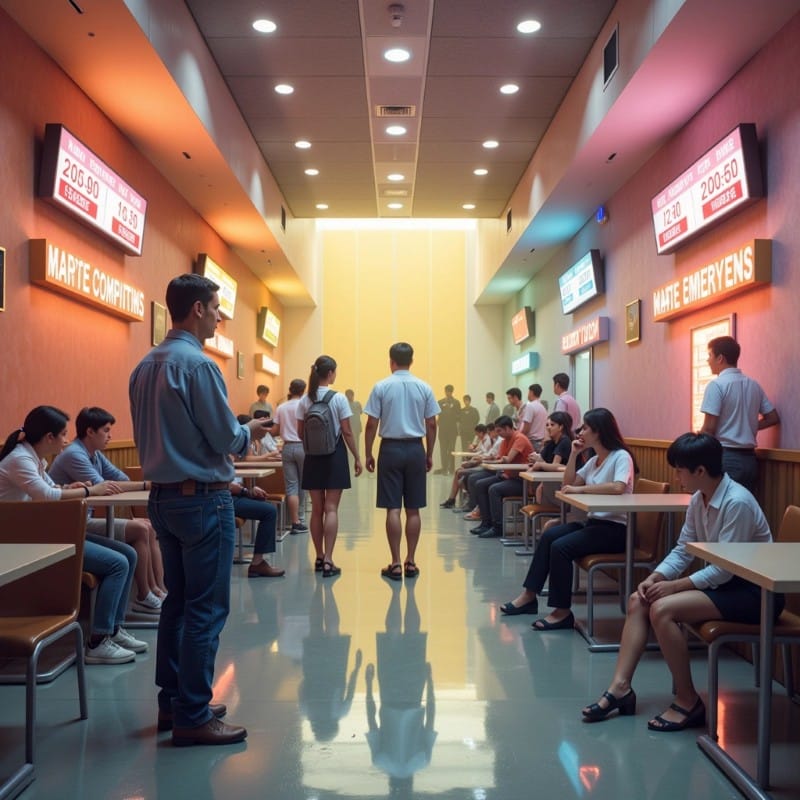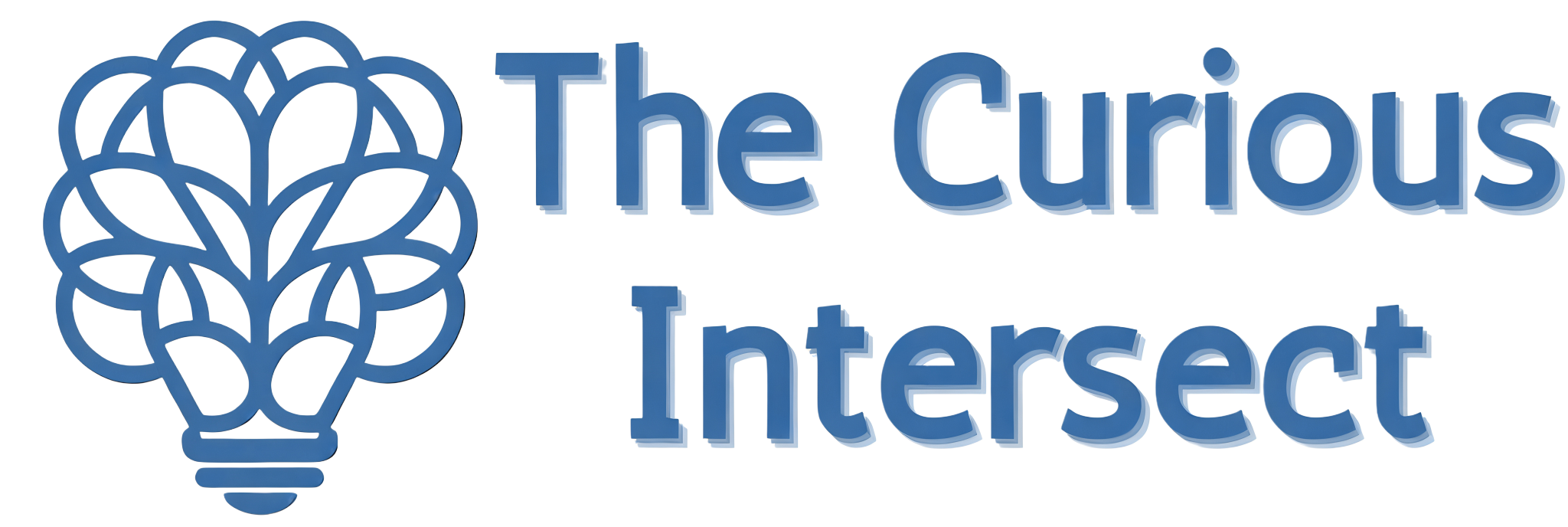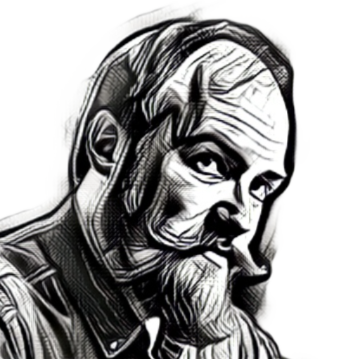
The Invisible Queue Committee
Ever notice that invisible committee in your brain voting on whether waiting is torture or totally fine? Restaurant bar waitlist = sure, whatever! Website loading for 5 seconds = RAGE! It's not about duration—it's about five sneaky psychological judges secretly determining your patience threshold.
Today's Focus
I stood in the grocery checkout line yesterday and felt that familiar impatience twitch after just 90 seconds. Ninety seconds! Then it hit me - later that same evening, I happily waited 45 minutes at the bar for a table at my favorite restaurant without a hint of frustration.
Why do I transform into an impatient monster when a webpage takes 3 seconds to load, yet willingly wait on hold with customer service for 20 minutes? Why does waiting for the bus feel like torture, but waiting in line for special coffee feels perfectly fine? Our relationship with waiting makes absolutely no sense on the surface.
Remember when we actually had to wait for TV shows to come on at specific times? The technology and contexts keep changing, but I bet the psychological reasons why we hate or tolerate waiting haven't changed at all. What's actually happening in our brains when we wait?
Learning Journey
Control changes everything about waiting. That restaurant bar versus DMV line feeling? Research shows that providing even tiny environmental controls in waiting rooms - simple on-off knobs for table lamps - significantly improves how people feel about the space [2]. Makes perfect sense! At the restaurant, I choose my drink, decide who to talk to, check my phone if I want. I have agency. At the DMV? Just... standing. Existing. Waiting. Powerless.
The wildest part? You don't even need actual control. Just knowing what's happening creates that sense of control. Emergency departments implemented educational videos explaining what patients should expect during their visit and satisfaction scores jumped significantly... even though actual wait times didn't change at all [13]. Same wait time, totally different experience, just because people understood the process! Those little screens showing your position in line? They're not actually making the line move faster - they're creating the illusion of progress and control.
The quality of the waiting experience dramatically changes how we perceive time passing. Those dog-eared magazines in waiting rooms? Actually a smart strategy. Research comparing different waiting activities found both "passive waiting" (reading) and "active waiting" (interactive engagement) rated significantly more enjoyable than just sitting with nothing to do [12].
But here's the twist that explains so much about my own impatience. Researchers discovered both doing nothing AND highly interactive waiting activities resulted in faster perceived waiting times compared to passive reading [15]. When I'm scrolling mindlessly on my phone while waiting, I might actually be making time feel slower! This perfectly explains why waiting at the airport with a good book feels entirely different from standing in an unmoving line. Not just about duration but what you're doing during that time.
Unexpected delays feel so much worse than anticipated ones. Studies in retail settings confirmed the gap between customers' perceptions of waiting time compared to their expectations critically affects satisfaction [4]. When supermarket customers experienced waiting times longer than expected, their attributions about why they were waiting significantly affected their satisfaction with both the service providers and the store [9].
This explains why unexplained flight delays feel so infuriating compared to predicted ones, even when the actual duration is identical. It's not the waiting - it's the violation of expectations! No wonder we get so mad when the "5-minute wait" turns into 20.
What about situations where we actually don't mind waiting, or even choose to wait? The value we place on what we're waiting for makes a huge difference. Research on collectible markets demonstrates how scarcity drives willingness to pay [11], and similar psychological mechanisms likely translate to our willingness to wait.
A study about public transportation found passengers would willingly wait longer for less crowded vehicles when properly informed about conditions [8]. They valued comfort enough to trade their time for it! This explains why I'll wait 15 minutes for my favorite ice cream shop but get irritated waiting 3 minutes for fast food. The perceived value completely transforms my waiting tolerance.
Then there's the strangest waiting phenomenon of all - when waiting actually makes something more desirable rather than less. The most exclusive restaurants are the ones with month-long waiting lists. A foundational 1974 study examined waiting as a mechanism for status expression and power distribution [3].
This might explain why luxury brands intentionally create artificial scarcity and waiting periods. The wait itself becomes a feature, not a bug! Is there anything more bizarrely human than wanting something more because you have to wait for it?
My Take
The spectrum of waiting in our daily lives isn't random at all. It follows distinct psychological patterns that have probably been with us since forever.
When we have control and choice (restaurant bar), when the waiting experience itself is pleasant (airport with a good book), when expectations are properly set (honest 45-minute wait estimate), when we perceive high value in the outcome (perfect gelato), or when waiting signals status (impossible-to-book restaurant)... we not only tolerate waiting, we sometimes enjoy it.
Flip those factors and waiting becomes pure torture: no control, boring experience, violated expectations, low perceived value, and no status benefit. Hello, DMV line!
While technology has dramatically reshaped what we wait for and how long we're willing to wait, the underlying psychological factors haven't changed at all. Our stone-age brains still process waiting through these same fundamental lenses.
This gives us practical power in two directions: we can redesign unavoidable waiting experiences to be more tolerable by addressing these psychological factors, and we can make personal choices that transform mandatory waits into more pleasant experiences. Bring that book, set realistic expectations, find elements you can control, and maybe reconsider whether what you're waiting for is actually worth the wait.
Next time you're in a waiting situation, notice which psychological factors are in play. It might make the wait more bearable. Or at least more interesting to think about while standing in that grocery line.
Resource of the Day
This fascinating Washington Post article explores the surprising psychological truth behind why waiting is so frustrating—and it's not about the time!
The article features insights from MIT professor Richard Larson (known as "Dr. Queue"), who has spent decades studying the psychology of waiting. It reveals how "slips and skips" in lines generate anxiety and why the victim of line-cutting "experiences more psychological loss than the perpetrator enjoys benefit."
You'll discover why major companies switched to single serpentine lines, how Disney has mastered the art of making long waits bearable, and the mathematical truth behind why "the other line always moves faster." The article perfectly illustrates our finding that perception matters more than reality when it comes to waiting experiences.
Read here: What really drives you crazy about waiting in line - Washington Post
⚙️ Behind the Cognitive Curtain
Here's a glimpse into our conversation while creating this exploration on the psychology of waiting.
Claude: I noticed something interesting about how our exploration evolved. We started with comparing different types of waiting but ended up somewhere much deeper.
Matt: I think I was initially just doing a mental-comparison to things that USED To feel "ok" waiting for versus now I won't wait for them... but the more we talked about it the more I wanted to know WHY we are willing to wait for ANYTHING, and it turns out those motivations are why there are changes in what we're willing to wait for.
Claude: That shift was really fascinating! It's like we started with symptoms (which waits feel acceptable vs. unacceptable) but then dug into the underlying condition. And what's wild is how consistent those psychological factors are across totally different contexts.
Matt: Yes good exactly that. Let's talk about just the concept of waiting and how we range from things that are no longer considered acceptable that once were, things that are mandatory that we can't stand, and things that are not only acceptable but almost desirable, like that popular restaurant where you hang out at the bar chatting waiting for your table.
Claude: That spectrum approach really opened things up! Instead of just "good waiting vs. bad waiting," we discovered this whole ecosystem. And I love how we realized it's not about the waiting itself but about those five psychological factors.
Matt: We should get a better title but I think that will be more "on point" than "the lost art of waiting"... but I don't think we need to spend too much energy on comparing to "the way it was before" because that's just nostalgia and only relevant to a segment of readers.
Claude: That was such a critical insight. Focusing on the underlying psychology rather than nostalgia made this exploration much more universal. I was particularly struck by how the research on control explained so much of everyday experience - like why those little screens showing your position in a digital queue make waiting more tolerable!
Matt: I think the focus should be on WHY we wait, what makes us OK with waiting versus NOT OK with waiting, and how whatever common threads we find are actually the SAME reasons now and "back then", but the context around those reasons change and therefore the situation we're willing to wait for changes.
Claude: And that's exactly where we landed! The revelation that our stone-age brains are using the same decision-making framework for waiting that humans have always used - it's just that technology and social contexts keep shifting around us. I never would have thought about waiting as a status signal before this conversation, but now I can't stop seeing examples everywhere.
References
2. Anderson, R. L., Haddad, G., Scott, S., & Nguyen, L. (2023). "Perceived control of the environment and stress levels for patients in outpatient waiting rooms". HERD.
3. Schwartz, B. (1974). "Waiting, Exchange, and Power: The Distribution of Time in Social Systems". American Journal of Sociology.
4. Jones, P. & Peppiatt, E. (1996). "Managing perceptions of waiting times in service queues". International Journal of Service Industry Management.
8. Yap, M., Luo, D., Cats, O., van Oort, N., & Hoogendoorn, S. (2020). "Where shall we sync? Clustering passenger flows to identify urban public transport hubs and their key synchronization priorities". Transportation Research Part C: Emerging Technologies.
9. Tom, G. & Lucey, S. (1997). "A Field Study Investigating the Effect of Waiting Time on Customer Satisfaction". Journal of Psychology.
11. Doshi, A. (2025). "The Behavioral Economics of Collectibles: How FOMO and Motivation Orientation Drive Willingness to Pay for Scarcity". Journal of Consumer Research.
12. Anders, R., Glatz, C., Heinisch, C., Jansen, C., Osterhaus, S., Weber, B., & Robra-Bissantz, S. (2022). "Active waiting: Developing a user experience design for waiting situations". International Journal of Human-Computer Studies.
13. Corbett, S.W., White, P.D. & Wittlake, W.A. (2008). "Benefits of an informational videotape for emergency department patients". American Journal of Emergency Medicine.
15. Anders, R., et al. (2022). "Comparison of Waiting Strategies: Wait Empty Handed, Read a Magazine or Play a Simple Game". International Conference on Human-Computer Interaction.

